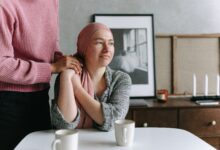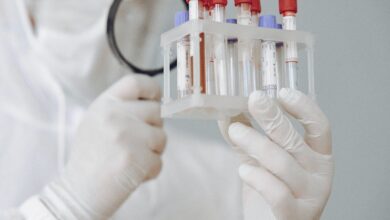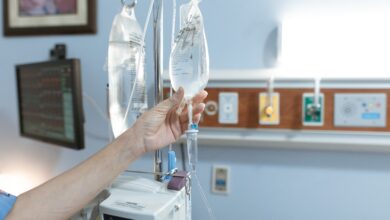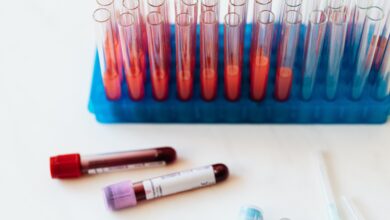
A reference treatment against cancer, chemotherapy is based on the use of different drugs in a personalized care protocol. This “chemical cocktail” attacks cancer cells either by destroying them or by blocking their multiplication. But because it also affects healthy cells, its side effects are not trivial. However, increasingly targeted treatments make it possible to reduce them.
What is chemotherapy?
Chemotherapy is one of the basic treatments for cancer. It consists of administering different drugs that will act either by killing the cancerous cells or by preventing them from multiplying.
Different molecules are used in chemotherapy, often in combination (polychemotherapy). They fight cancer with different mechanisms of action. Some affect DNA synthesis or function, preventing them from dividing; others interact with RNA and proteins. There are thus 4 main classes of drugs in chemotherapy according to their mode of action:
- DNA modifiers , including topoisomerase inhibitors, topoisomerase II inhibitors, anthracyclines (which are inserted into the DNA cell);
- spindle poisons , which work by blocking the formation of the color spindle allowing the separation of chromosomes during mitosis, thus preventing cell division;
- alkylating agents , which hinder DNA replication and transcription processes by producing covalent lesions between DNA strands through an alkylation effect (a hydrogen proton is replaced by an alkyl group, non-functional ). For example: Cyclophosphamide, Ifosfamide, Melphalan, Busulfan.
- antimetabolites , which act by inhibiting the synthesis of nucleic acids, the first step necessary for any cell multiplication. Some antimetabolites: methotrexate, 5-fluorouracil, pyrimidine analogues, tegafur, capecitabine, azacitidine…
The vast majority of these molecules are administered intravenously; others orally, by intramuscular or subcutaneous injection.
Chemotherapy is currently undergoing two major development trends:
- the development of oral chemotherapy;
- precision medicine, with personalized treatments based on the analysis of the biological and genetic characteristics of the patient’s tumour.
How is chemotherapy going?
Chemotherapy sessions take place in conventional hospitalization (at the start of treatment for example or during intensive chemotherapy), on an outpatient basis or at home (HAD).
The care protocol is personalized: the molecules and their dosage, the number and frequency of sessions depends on the type of tumour, its stage, the general state of health of the patient, his age, the body’s response to this treatment. Some chemotherapies are daily (especially those taken orally), others once a week, every 15 days, etc. The duration of the session varies from 10 minutes to more than 72 hours for the longest sessions.
The term “cycle” refers to the period comprising the days during which the treatment is actually administered and the “rest period” to the days during which the treatment is not delivered. This period of rest is essential so that healthy cells have time to renew themselves. The number of chemotherapy cycles also varies depending on the type of cancer and the patient. Consultations are planned throughout the treatment in order to monitor the progression of the disease and the body’s tolerance, and to adapt the therapeutic protocol if necessary.
The drugs are usually given intravenously. To avoid having to prick the patient at each chemotherapy session, a catheter or an implantable chamber (in a vein located in the neck) can be placed throughout the duration of the treatment. Complementary treatments can be given, before or after the infusion, to limit the undesirable effects.
When to use chemotherapy?
A pillar of anti-cancer treatment, chemotherapy is used in many cancers, at different stages.
According to a report on cancer chemotherapy in France, in 2014, five types of cancer combined nearly 87% of stays and sessions for/with chemotherapy:
- cancers of the digestive system: 26.7%;
- breast cancer: 21.9%;
- hematological cancers: 18.3%;
- cancers of the respiratory system: 12.6%;
- gynecological cancers: 7.0%.
Chemotherapy can be used alone or in addition to surgery (removal of the tumor or tumerectomy). We then distinguish:
- neoadjuvant chemotherapy : performed before surgery, it aims to reduce the size of the tumor and thus facilitate its removal, as well as to reduce the risk of recurrence of the disease;
- Adjuvant chemotherapy : prescribed after surgery, it aims to reduce the risk of recurrence at the site of the original tumor or elsewhere in the body.
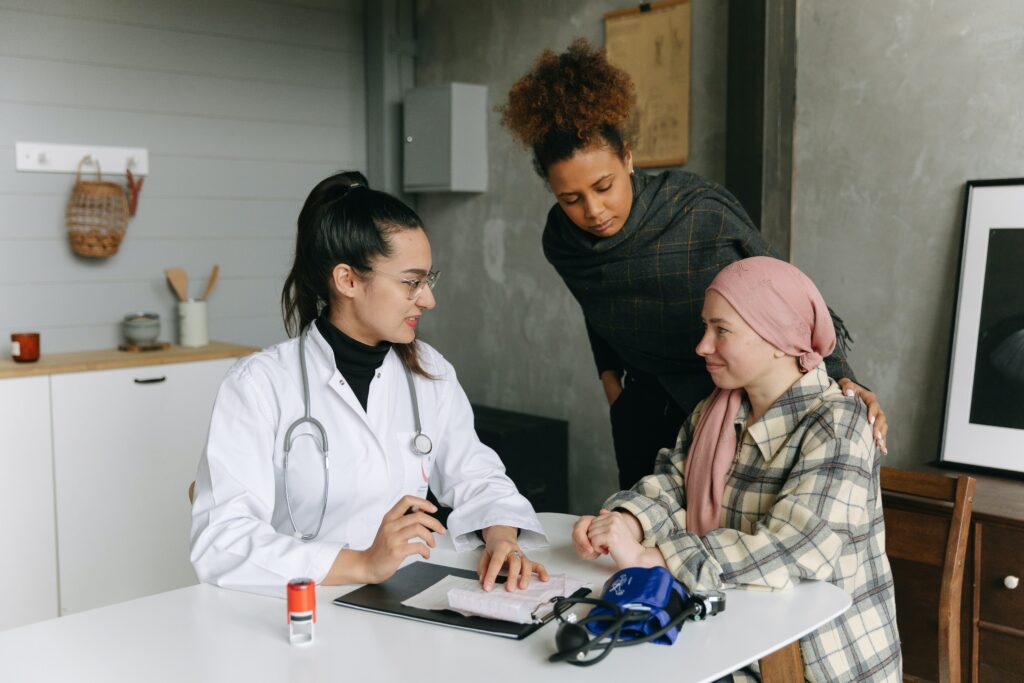
Chemotherapy can also be used in cases of metastases, that is to say when cancerous cells have developed in areas other than the original cancer. This is called metastatic chemotherapy.
Chemotherapy can be used in parallel with radiotherapy, and for certain types of cancer, with immunotherapy, a major therapeutic advance in recent years in the fight against cancer.
The side effects
The molecules used in chemotherapy also act on the healthy cells of the body, in particular those which multiply rapidly (those of the bone marrow, hair, skin, etc.), which leads to various side effects:
- a decrease in certain white blood cells and therefore a weakening of immunity;
- a decrease in platelets and red blood cells;
- nausea and vomiting that may appear from the chemotherapy session and in the following 5 days;
- diarrhoea;
- inflammation of the mouth (mucositis);
- hair loss;
- skin and nail changes;
- venous fragility;
- great fatigue.
Adverse effects vary depending on the molecules used but also on the patient, because each body reacts differently.
Medicines make it possible to limit these side effects, as do certain alternative medicines, such as auriculotherapy or acupuncture, used in certain hospitals. This care, called “support care”, is essential for the patient’s quality of life, because cancer care cannot stop at treating the disease alone. Psychological support is also important, as is maintaining a good skincare image, through workshops or beauty treatments, for example.
- bridge
- Allergies (overview)
- Achluophobia : all about the fear of the dark
- At what age can you do bodybuilding?
- Fatigue in the morning: causes and remedies



